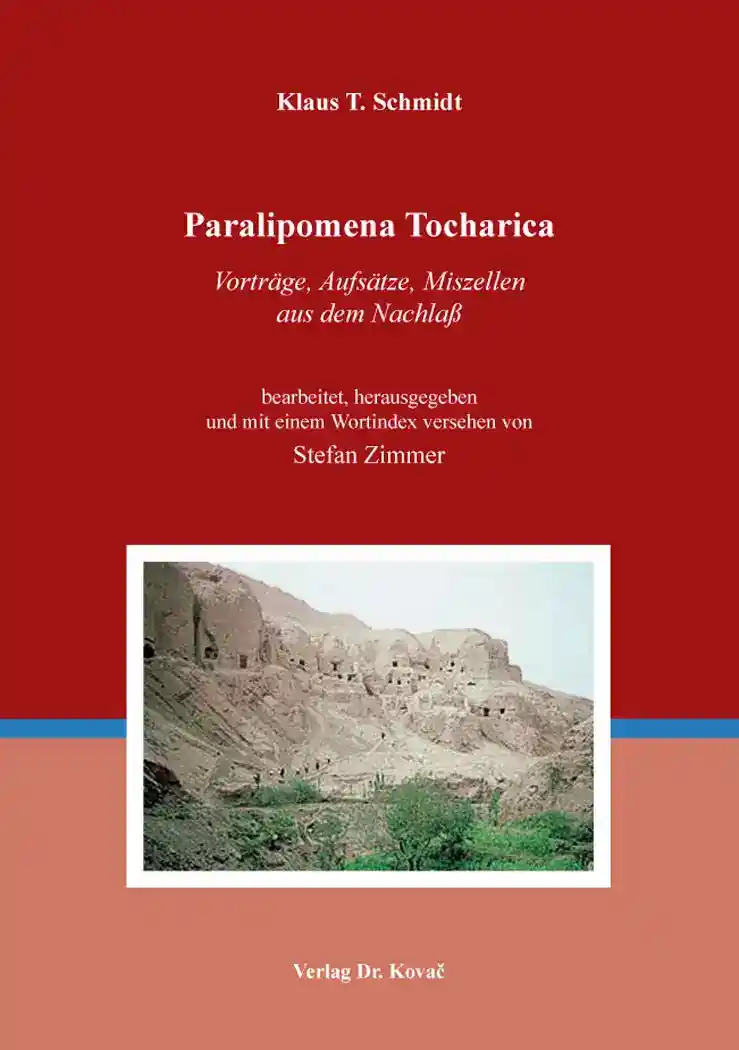Klaus T. SchmidtParalipomena Tocharica
Vorträge, Aufsätze, Miszellen aus dem Nachlaß
PHILOLOGIA – Sprachwissenschaftliche Forschungsergebnisse, volume 250
Hamburg 2021, 164 pages
ISBN 978-3-339-12128-8 (print)
ISBN 978-3-339-12129-5 (eBook)
About this book deutschenglish
Tocharian was discovered in the early twentieth century at the Northern Silkroad in the region then called Eastern Turkestan, today Xinjiang in the Uygur Autonomous Region of Western China. Expeditions from Prussia, England, France, Russia and Japan brought home many treasures of an hitherto unknown civilization: frescos from the ruins of monasteries, sculptures, and thousands of manuscript fragments in many languages, some known like Sanskrit and Chinese, but many others unknown. One of the latter quickly turned out to be written in an Indo-European language of centum, i.e. western type. The texts can be dated roughly to the first millenium CE and contain, nearly exclusively, Tocharian versions of Buddhist religious literature. Since then, international scholarship has worked patiently on the the grammar and lexicon of the two closely related dialects (or rather languages) called East Tocharian and West Tocharian, and on the literature and its connections with Buddhist Sanskrit and Gur literatures. The main cities of the Tocharian kingdoms were Turfan, Kucha and Aqsu. The region has always been a meeting spot of many cultures and religions. Tocharian seems to have been abandoned slowly in favour of Uygur, the languge of a Turkish people who arrived there in the first quarter of the 1st millenium, adopting Buddhism, Manicheism and Nestorian Christendom. Uygur survives to the present day, but Tocharian disappeared, at the latest during the Mongol invasion of the 12th century. The material remnants fell prey to frequent earthquakes, and to Islam.
Klaus T. Schmidt (1932–2017) was a scholar of international renown, acknowledged by all as the greatest Tocharian scholar of his generation. His enthusiasm gave an enormous impetus to the field, winning many younger scholars over to engage in the ongoing scholarly work. His extensive publications are now completed by these 24 miscellaneous studies of grammatical questions, of texts (including translations) and of words (including etymologies), edited posthumously by an old friend and fellow Indo-Europeanist.
